Data Warehouse Modeling
Data warehouse modeling is the process of designing the schemas of the detailed and summarized information of the data warehouse. The goal of data warehouse modeling is to develop a schema describing the reality, or at least a part of the fact, which the data warehouse is needed to support.
Data warehouse modeling is an essential stage of building a data warehouse for two main reasons. Firstly, through the schema, data warehouse clients can visualize the relationships among the warehouse data, to use them with greater ease. Secondly, a well-designed schema allows an effective data warehouse structure to emerge, to help decrease the cost of implementing the warehouse and improve the efficiency of using it.
Data modeling in data warehouses is different from data modeling in operational database systems. The primary function of data warehouses is to support DSS processes. Thus, the objective of data warehouse modeling is to make the data warehouse efficiently support complex queries on long term information.
In contrast, data modeling in operational database systems targets efficiently supporting simple transactions in the database such as retrieving, inserting, deleting, and changing data. Moreover, data warehouses are designed for the customer with general information knowledge about the enterprise, whereas operational database systems are more oriented toward use by software specialists for creating distinct applications.
Data Warehouse model is illustrated in the given diagram.
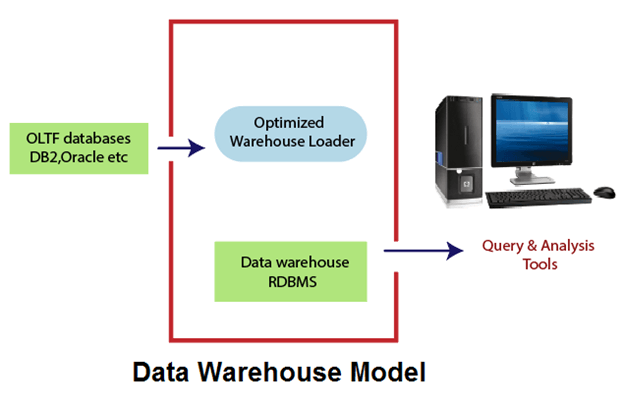
The data within the specific warehouse itself has a particular architecture with the emphasis on various levels of summarization, as shown in figure:
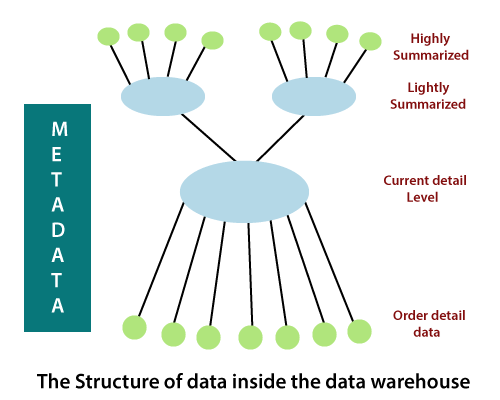
The current detail record is central in importance as it:
- Reflects the most current happenings, which are commonly the most stimulating.
- It is numerous as it is saved at the lowest method of the Granularity.
- It is always (almost) saved on disk storage, which is fast to access but expensive and difficult to manage.
Older detail data is stored in some form of mass storage, and it is infrequently accessed and kept at a level detail consistent with current detailed data.
Lightly summarized data is data extract from the low level of detail found at the current, detailed level and usually is stored on disk storage. When building the data warehouse have to remember what unit of time is summarization done over and also the components or what attributes the summarized data will contain.
Highly summarized data is compact and directly available and can even be found outside the warehouse.
Metadata is the final element of the data warehouses and is really of various dimensions in which it is not the same as file drawn from the operational data, but it is used as:-
- A directory to help the DSS investigator locate the items of the data warehouse.
- A guide to the mapping of record as the data is changed from the operational data to the data warehouse environment.
- A guide to the method used for summarization between the current, accurate data and the lightly summarized information and the highly summarized data, etc.
Data Modeling Life Cycle
In this section, we define a data modeling life cycle. It is a straight forward process of transforming the business requirements to fulfill the goals for storing, maintaining, and accessing the data within IT systems. The result is a logical and physical data model for an enterprise data warehouse.
The objective of the data modeling life cycle is primarily the creation of a storage area for business information. That area comes from the logical and physical data modeling stages, as shown in Figure:
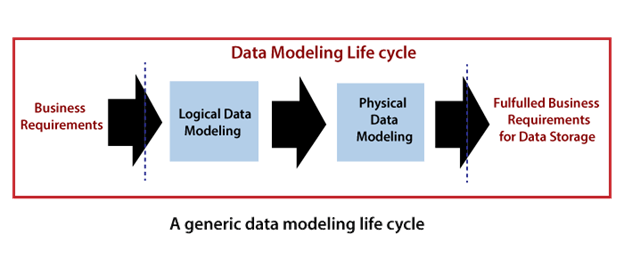
Conceptual Data Model
A conceptual data model recognizes the highest-level relationships between the different entities.
Characteristics of the conceptual data model
- It contains the essential entities and the relationships among them.
- No attribute is specified.
- No primary key is specified.
We can see that the only data shown via the conceptual data model is the entities that define the data and the relationships between those entities. No other data, as shown through the conceptual data model.
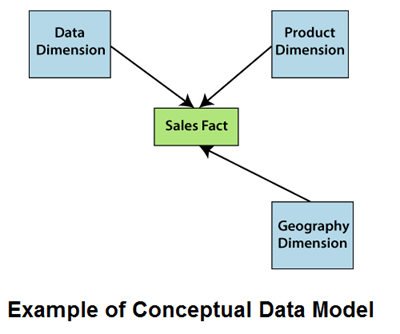
Logical Data Model
A logical data model defines the information in as much structure as possible, without observing how they will be physically achieved in the database. The primary objective of logical data modeling is to document the business data structures, processes, rules, and relationships by a single view – the logical data model.
Features of a logical data model
- It involves all entities and relationships among them.
- All attributes for each entity are specified.
- The primary key for each entity is stated.
- Referential Integrity is specified (FK Relation).
The phase for designing the logical data model which are as follows:
- Specify primary keys for all entities.
- List the relationships between different entities.
- List all attributes for each entity.
- Normalization.
- No data types are listed
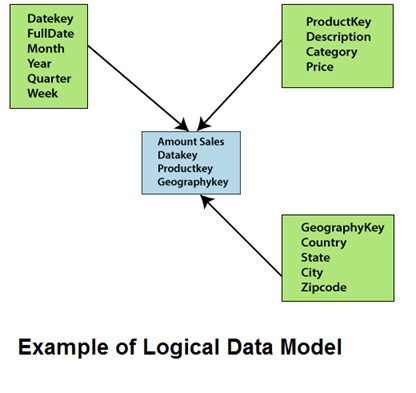
Physical Data Model
Physical data model describes how the model will be presented in the database. A physical database model demonstrates all table structures, column names, data types, constraints, primary key, foreign key, and relationships between tables. The purpose of physical data modeling is the mapping of the logical data model to the physical structures of the RDBMS system hosting the data warehouse. This contains defining physical RDBMS structures, such as tables and data types to use when storing the information. It may also include the definition of new data structures for enhancing query performance.
Characteristics of a physical data model
- Specification all tables and columns.
- Foreign keys are used to recognize relationships between tables.
The steps for physical data model design which are as follows:
- Convert entities to tables.
- Convert relationships to foreign keys.
- Convert attributes to columns.
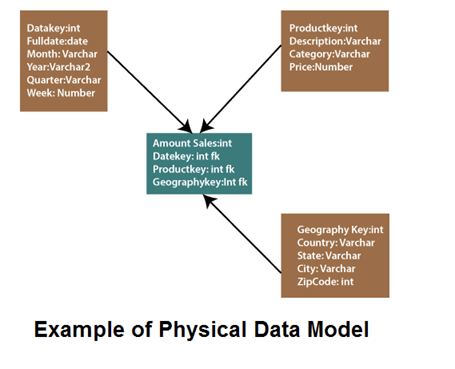
Types of Data Warehouse Models
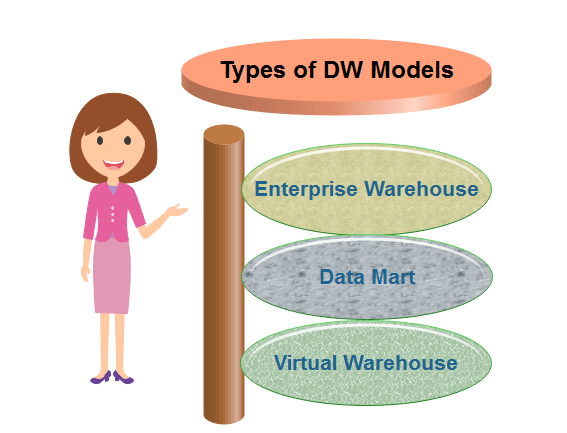
Enterprise Warehouse
An Enterprise warehouse collects all of the records about subjects spanning the entire organization. It supports corporate-wide data integration, usually from one or more operational systems or external data providers, and it’s cross-functional in scope. It generally contains detailed information as well as summarized information and can range in estimate from a few gigabyte to hundreds of gigabytes, terabytes, or beyond.
An enterprise data warehouse may be accomplished on traditional mainframes, UNIX super servers, or parallel architecture platforms. It required extensive business modeling and may take years to develop and build.
Data Mart
A data mart includes a subset of corporate-wide data that is of value to a specific collection of users. The scope is confined to particular selected subjects. For example, a marketing data mart may restrict its subjects to the customer, items, and sales. The data contained in the data marts tend to be summarized.
Data Marts is divided into two parts:
Independent Data Mart: Independent data mart is sourced from data captured from one or more operational systems or external data providers, or data generally locally within a different department or geographic area.
Dependent Data Mart: Dependent data marts are sourced exactly from enterprise data-warehouses.
Virtual Warehouses
Virtual Data Warehouses is a set of perception over the operational database. For effective query processing, only some of the possible summary vision may be materialized. A virtual warehouse is simple to build but required excess capacity on operational database servers.
